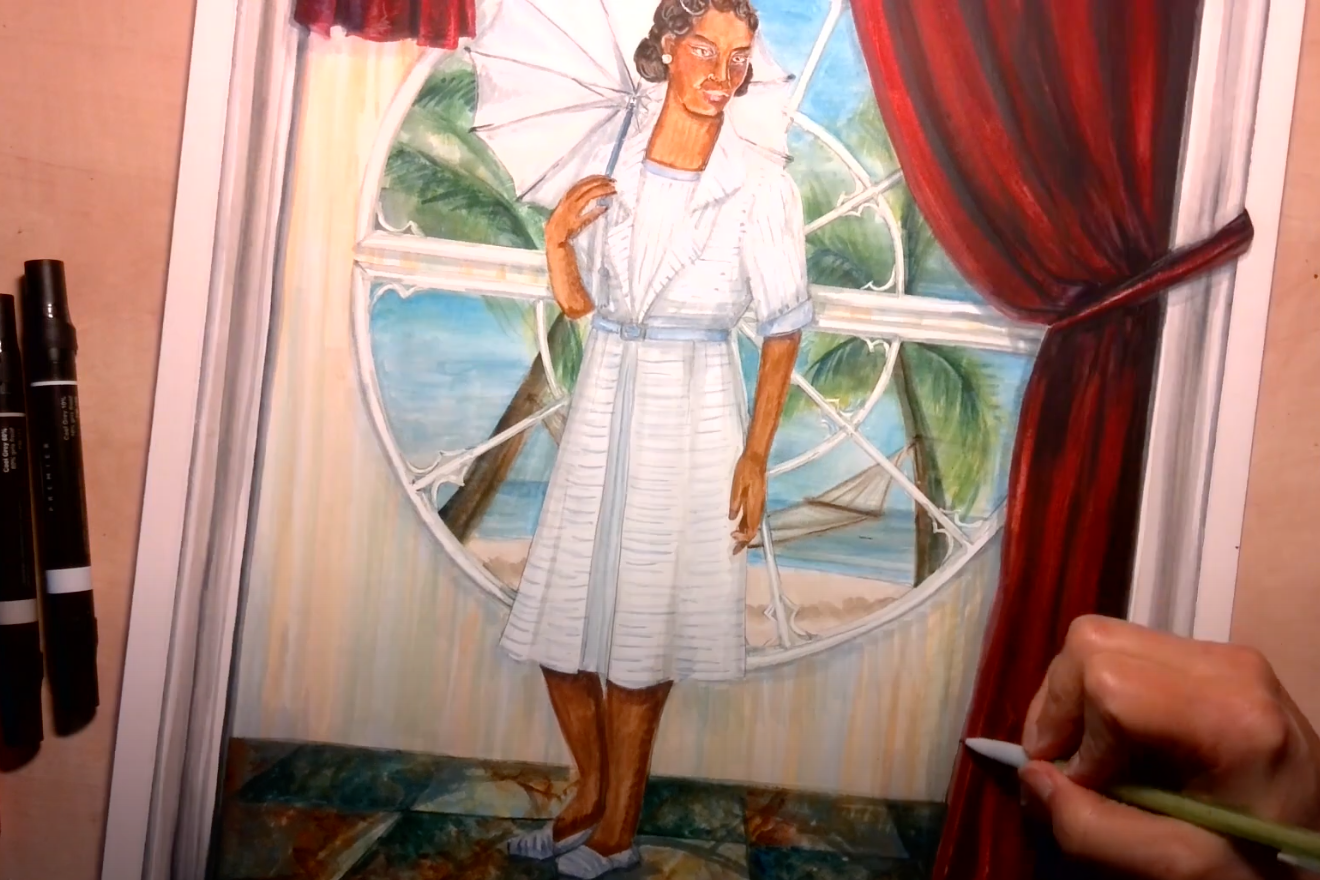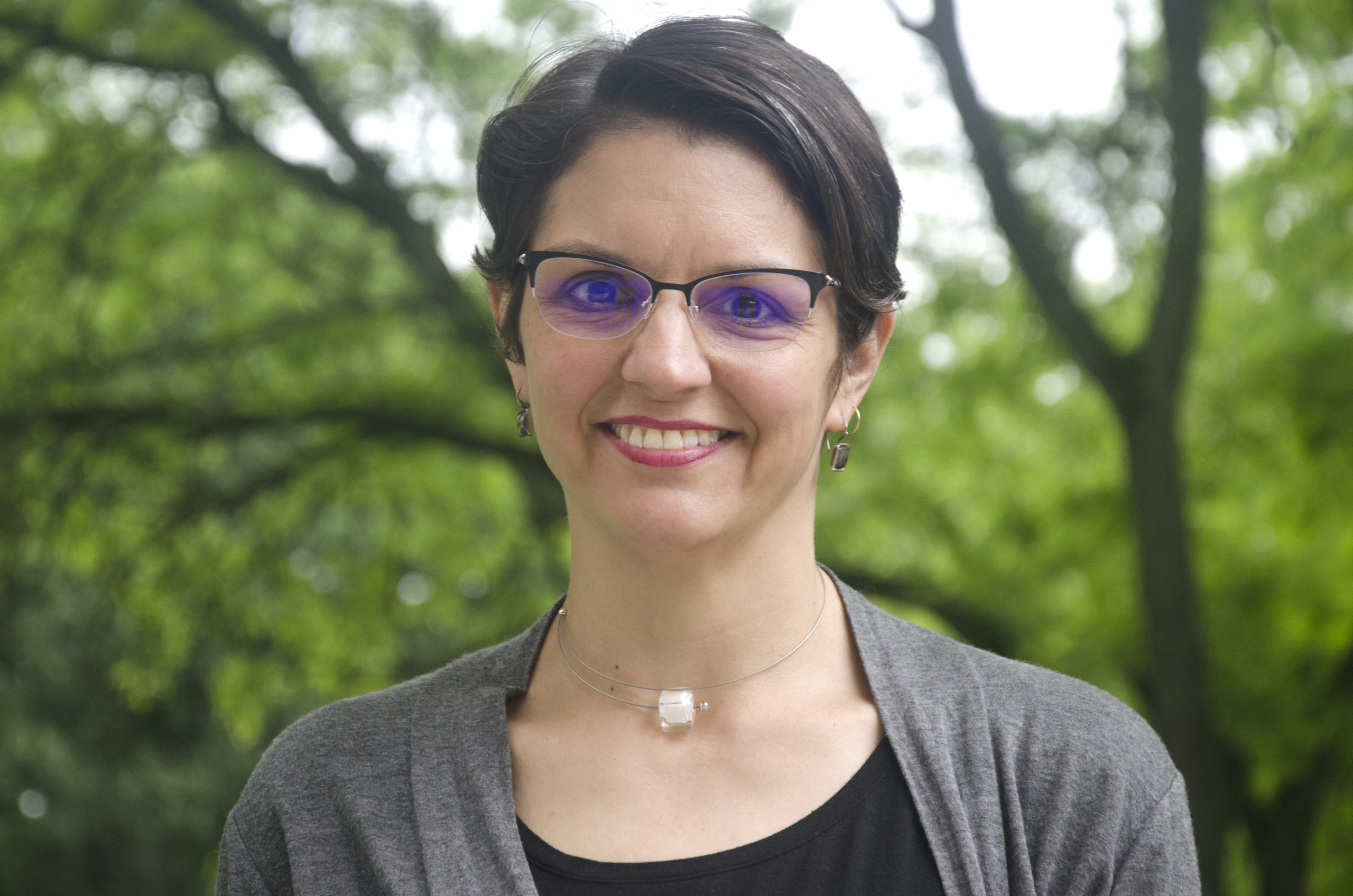By Claudia Capos
When the University of Michigan canceled in-person classes in March 2020 and switched to alternative teaching formats in response to the coronavirus pandemic, Associate Professor of Theatre and Drama Christianne Myers had to think creatively―and quickly.
Under ordinary teaching conditions, she presents real-time demonstrations of various design skills and techniques to first-year students in her Design Rendering course. Her class typically crowds around the table to watch her work and ask questions. With the imposition of Covid restrictions and a transition to remote learning, such close personal interactions were no longer feasible.
That summer Myers devised with an instructional solution. Using an overhead camera and editing software, she filmed a series of time-lapse videos of herself doing the demonstrations and then added voice-over narratives. At the end of each demo, she provided the approximate time for the assignment to help students gauge their preparation time for the work.
Myers posted her entire series of 45 videos on Canvas, a web-based learning management system, where her fall class could access them 24/7.
“The videos served as a visual reference library that students could view multiple times and use whenever they were ready to work independently,” says Myers, a talented costume designer who has designed the costumes for more than 50 shows presented by University Productions. “One of the amazing benefits of the video project is that the overall quality of student work made a huge leap. It really skyrocketed.”
Myers’s 45 videos got “two thumbs up” from her enthusiastic students.
“Time-lapse demos were the best blend of artistic and technical learning,” says Matthew Eggers, BA/BS ’24, who is pursuing a double major in Design and Production, concentrating in costume design, and computer engineering. “Touching on the essential takeaways of the assignment while also watching a designer’s process was more engaging than a traditional PowerPoint presentation would ever be and shorter.”
Eggers’s favorite videos showed Myers working on superhero costumes.
“I walked away from the course with a simple guide to rendering: intention and attention,” Eggers says. “By watching Professor Myers’s demos, I learned that rendering requires technical understanding of color and shape, but also of the project brief itself. Walking that line takes commitment, but, in the end, it improves my vision and execution in my work.”
Audrey Tieman, BFA/BA ’24, was a fully virtual student in the fall term.
“Professor Myers’s videos allowed me to see the entire process of a project from start to finish, with the ability to rewind and replay any areas where I was confused,” she says. “This meant that I was never going into a project blind, and felt more comfortable taking risks with new skills. I likely would have been more conservative if I hadn’t had this in-depth reference material.”
Tieman, who is focusing on Scenic and Property Design for her B.F.A. degree in Theatre Design and Production, says she was particularly taken with Myers’s video, “Costume Rendering Using Procreate.”
“The video introduced me to Procreate, an incredibly versatile digital-illustration application, and allowed me the time and space to learn skills that I carried through into my other classes and design work outside the classroom,” she says.
After completing the Rendering Design course, Tieman gained confidence in her ability to master even the most advanced techniques.
“The skills I learned using analog and digital mediums have enabled me to illustrate my design ideas in classes and productions, as opposed to just talking about them,” she says. “That ability will allow me to work on countless projects moving forward in my academic and professional career.”
Capturing the demonstrations on video provided a permanent resource for future classes and an opportunity for Myers to rethink her teaching modality.
“I can now restructure, or flip, the class to give students more ‘shoulder’ coaching when we are all together in the classroom,” she says. Myers also has posted some of her videos on an unlisted YouTube channel and Canvas Commons to share them with other educators and members of the costume community.
“Another silver lining is that I actually finished all of the demonstrations,” says Myers, who was recently appointed interim chair of the Department of Theatre and Drama. “I have a whole drawer full of half-finished classroom demos from past years.”




